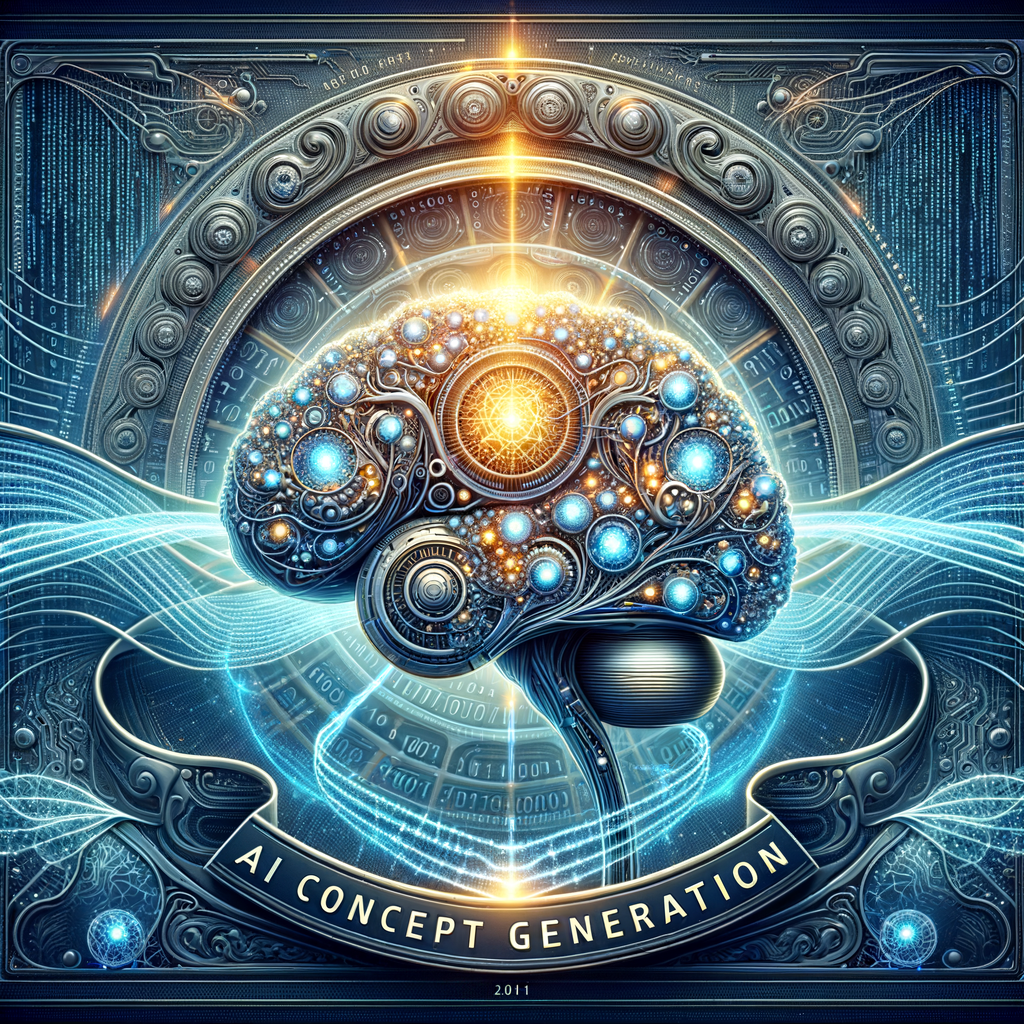
Ai Concept Generation: Must-Have Best Practices
Introduction
AI concept generation turns raw ideas into usable concepts. It helps teams explore product features, campaign themes, and design directions. In short, it speeds up creative work without replacing human judgment.
This article shares must-have best practices for AI concept generation. You will learn pragmatic steps, tool choices, and evaluation tips. Use these practices to get reliable, creative, and ethical results.
Why AI Concept Generation Matters
AI concept generation shortens the idea cycle. It sifts through many possibilities fast. As a result, teams can test more directions in less time.
Moreover, AI uncovers patterns humans might miss. It can recombine concepts in fresh ways. Consequently, your team gains unexpected starting points for innovation.
Fundamentals of Strong Concept Generation
First, define a clear goal before generating concepts. Goals guide prompts and filter outputs. Without clarity, you risk noisy results and wasted time.
Second, set constraints to focus creativity. Constraints include audience, budget, or tech limits. They help AI produce realistic and actionable concepts.
Choosing Tools and Datasets
Pick tools that match your needs. Some tools excel at text creativity. Others pair well with images or structured data. Compare features like customization, speed, and cost.
Also, choose datasets carefully. Use high-quality, diverse data to reduce bias. When possible, curate domain-specific datasets for better relevance.
Table: Tool Types and Use Cases
– Model type: Use case
– Large language models: Ideation and copy drafts
– Multimodal models: Visual concept sketches and mood boards
– Retrieval-augmented models: Fact-aware concept briefs
– Fine-tuned models: Niche tone and industry specifics
Prompt Design for Better Outcomes
Write prompts that give context and constraints. Include audience, goal, and format. Short prompts often lack detail; add specifics to guide the model.
Use structured prompts to get comparable outputs. For example, ask for “three concepts with one-sentence title, two benefits, and one risk.” This format makes review easier and speeds iteration.
Iterative Prompting and Temperature Tuning
Iterate prompts rather than rely on the first output. Adjust wording, add examples, or change the temperature. Lower temperature yields focused outputs. Higher temperature creates variety.
Track which prompt changes improved output. Over time, you will build prompt templates for common tasks. These templates save time and keep quality high.
Human-AI Collaboration
Treat AI as a creative partner, not a replacement. Humans decide strategy, context, and final judgment. AI supplies options, drafts, and patterns.
Create workflows that blend human insight and AI speed. For instance, use AI for initial ideation, and humans for synthesis and selection. This balance boosts both creativity and feasibility.
Evaluation and Metrics
Define evaluation criteria early. Use metrics like novelty, feasibility, alignment, and user interest. Quantify where possible to compare concepts reliably.
Combine quantitative and qualitative review. Run quick user tests, expert reviews, or A/B tests. Also, use scorecards to standardize evaluation across reviewers.
Prototype and Rapid Testing
Turn promising concepts into low-fidelity prototypes quickly. Use sketches, storyboards, or simple landing pages. Fast prototypes reveal practical problems early.
Then, test prototypes with small user groups. Collect both behavior data and open feedback. Iteration after testing refines concepts into viable products.
Managing Bias and Ethical Risks
AI can amplify bias from its training data. Therefore, actively audit outputs for fairness and stereotyping. Use diverse reviewers to catch blind spots quickly.
Also, document known limitations and ethical risks. When a concept could harm people, halt and reassess. Ethical guardrails protect users and your brand reputation.
Legal and IP Considerations
Understand intellectual property rules that apply to AI outputs. Some jurisdictions treat AI-generated work differently. Always verify ownership before commercial use.
When you use external datasets or models, check licenses and terms. Cite sources if required. Also, keep records of your inputs and edits for traceability.
Scaling Workflows and Team Roles
As you scale, define clear roles and handoffs. Have prompt engineers, domain experts, and reviewers. Each role speeds decisions and maintains quality.
Automate repeatable steps like filtering and tagging. Use pipelines that log changes and store versions. Automation reduces friction and improves traceability.
Case Studies and Examples
Example 1: Product Feature Ideation
A SaaS team used AI concept generation to brainstorm new onboarding flows. They generated 50 variants in two hours. After testing, they combined elements from three AI concepts into a winning design.
Example 2: Marketing Campaign Concepts
A small agency used AI to create campaign themes and copy drafts. They quickly tested headlines in ads. The result: a 20% lift in click-through rates after tuning.
Practical Checklist for Every Session
Before you start:
– Set a clear goal and constraints.
– Choose the right model and dataset.
– Prepare evaluation criteria.
During generation:
– Use structured prompts and examples.
– Keep iterations short and frequent.
– Save outputs and prompt versions.
After generation:
– Score concepts with a rubric.
– Prototype top candidates.
– Run quick user tests and document feedback.
Templates and Prompt Examples
Here are a few reusable prompt templates:
– Ideation template:
“Generate five concept ideas for [audience] to solve [problem]. For each, give a one-line title, two benefits, and one potential challenge.”
– Visual mood board request:
“Describe a visual mood board for [concept]. Include color palette, textures, and three reference images or themes.”
– Rapid feature spec:
“Write a one-paragraph feature spec for [feature name] with user story, key interactions, and two success metrics.”
These templates keep your sessions efficient. They also make evaluation and iteration easier.
Common Pitfalls and How to Avoid Them
Pitfall: Vague prompts. Fix: Add audience, constraints, and desired format.
Pitfall: Over-relying on the first result. Fix: Produce multiple variations and compare.
Pitfall: Ignoring ethics and bias. Fix: Review outputs with diverse reviewers.
Address these pitfalls early. You will save time and reduce rework later.
Measuring ROI of AI Concept Generation
Track time saved and the number of quality concepts produced. Also, measure conversion lifts, user engagement, or sales from implemented ideas. Combine these metrics to estimate ROI.
Set realistic expectations during pilots. Early tests often increase speed more than final output quality. Over time, improvements compound as teams refine prompts and workflows.
Tools, Costs, and Budgeting
Budget for model access, compute, and human review time. Some tools charge per token or per month. Others offer enterprise pricing and customization.
Consider total cost of ownership. That includes onboarding, data labeling, and monitoring. Balance tool choice against your team’s skills and needs.
Table: Cost Considerations
– One-time: Setup, fine-tuning, dataset curation
– Recurring: API usage, compute, subscriptions
– Human costs: Reviewers, prompt designers, testers
– Hidden costs: Compliance, legal review, bias audits
Future Trends to Watch
Expect tighter integration between multimodal models and design tools. That integration will speed visual concept creation. Also, improved explainability will help teams understand model choices.
Regulation will likely increase. As a result, teams must track legal changes and update workflows. Staying proactive will reduce compliance surprises.
Summary and Next Steps
To succeed with AI concept generation, plan, iterate, and test. Use clear prompts, defined evaluation, and human oversight. With practice, you will turn AI output into actionable concepts.
Start small with pilot projects. Then scale successful workflows and templates. Keep ethics and measurement front and center.
Frequently Asked Questions
1) How do I choose the best model for concept generation?
Choose models based on modality and control needs. For text ideas, use large language models. For images, use multimodal models. Also, test smaller models for cost efficiency.
2) How much human review does AI concept generation need?
You need enough review to ensure quality and safety. At minimum, include a domain expert and a diverse reviewer. Complex projects may require legal and ethical reviews too.
3) Can AI replace human ideation entirely?
No. AI speeds ideation and expands variety. However, humans provide context, judgment, and values. Treat AI as an assistant, not a replacement.
4) How do I prevent biased outputs from skewing concepts?
Use diverse datasets and reviewers. Run bias checks on outputs. Also, add constraints and post-process outputs to remove harmful content.
5) What metrics best evaluate generated concepts?
Use novelty, feasibility, alignment with goals, and user interest. Quantify where possible with scorecards and quick user tests.
6) Should I fine-tune models for my domain?
Fine-tuning helps when you need consistent tone or domain knowledge. It costs more but yields higher relevance. Start with prompts first; fine-tune when needed.
7) How do I protect IP when using third-party models?
Review model and dataset licenses closely. Keep records of inputs and edits. Seek legal advice for commercial deployments.
8) How can small teams run AI concept generation affordably?
Use open-source or smaller models for early work. Limit API calls with structured prompts. Reuse templates and combine human review efficiently.
9) How many concepts should I generate per session?
Generate enough to cover meaningful variety. A practical range is 10–50 concepts depending on scope. Then filter and prototype the top 3–5.
10) How long will it take to implement AI concept generation in my workflow?
You can pilot in days to weeks. Full adoption takes months as teams build templates and review processes. Start with a focused use case for faster wins.
References
– OpenAI. “ChatGPT and GPT-4.” https://openai.com
– Google AI. “Multimodal Models and Research.” https://ai.google/research
– Stanford HAI. “AI Index Report.” https://hai.stanford.edu/research/ai-index-2023
– ACM. “Ethics Guidelines for AI.” https://www.acm.org/binaries/content/assets/public-policy/ai-ethics-guidelines.pdf
– Microsoft. “Responsible AI Principles.” https://learn.microsoft.com/en-us/azure/ai-responsible-ai
(End of article)

